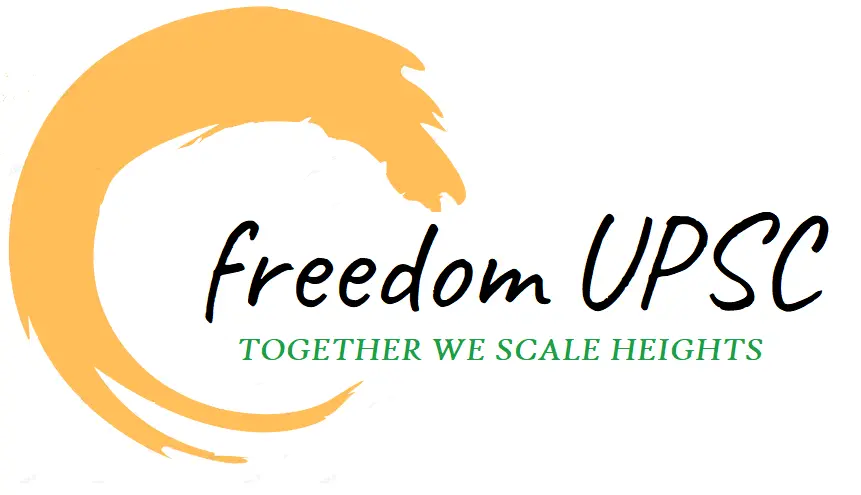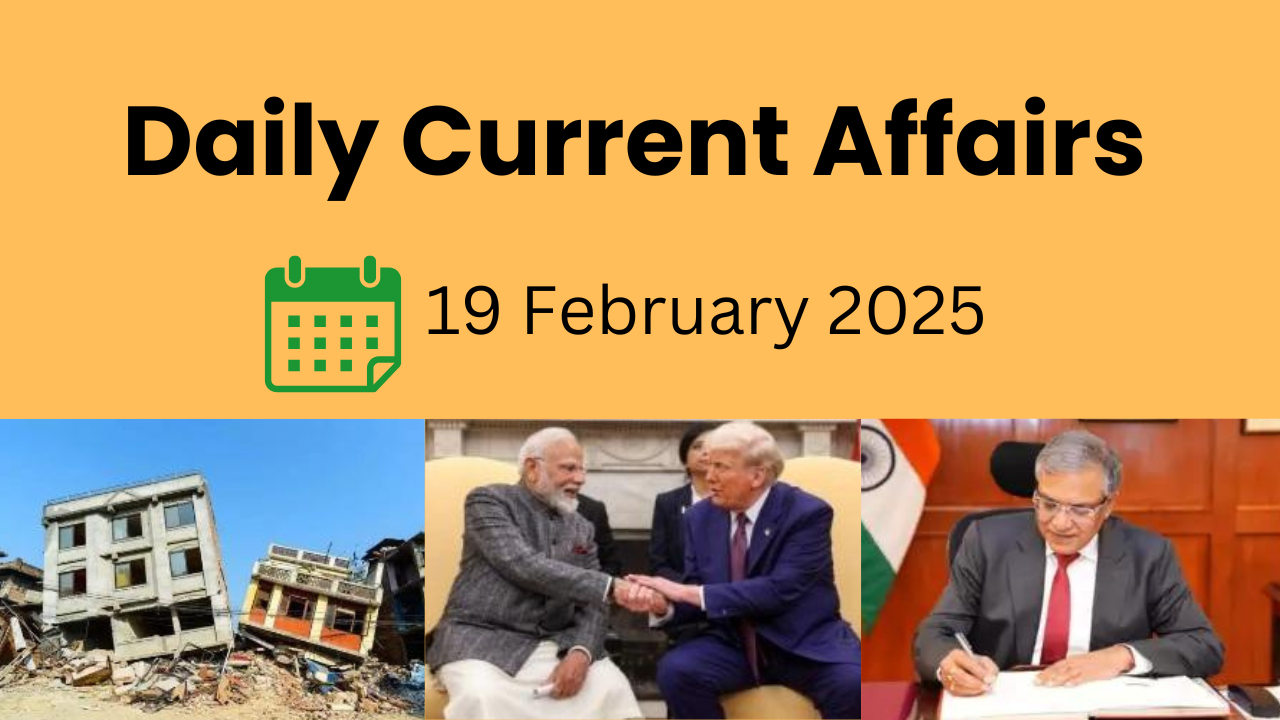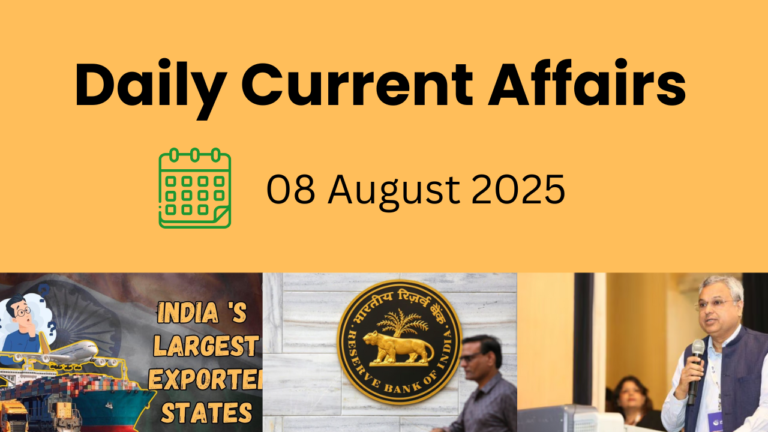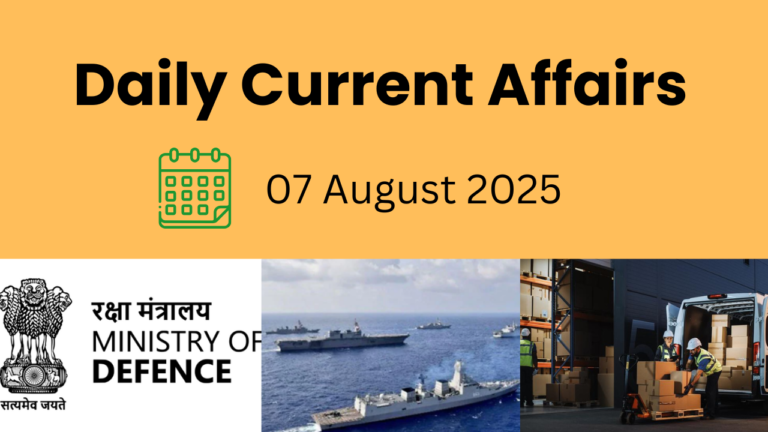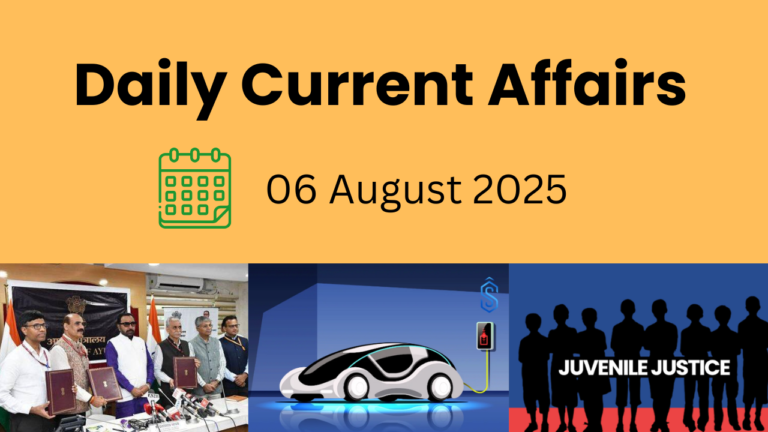1. DDoS Cyber Attack on Karnataka’s Kaveri 2.0 Portal: Impact & Prevention
Context: Karnataka’s Kaveri 2.0 property registration portal suffered a major DDoS attack in January 2025, disrupting key citizen services. Investigations confirmed that the outage was not a technical issue but a deliberate cyberattack, highlighting the vulnerabilities of critical digital infrastructure.
What is a DDoS Attack?
A Distributed Denial of Service (DDoS) attack is a cyberattack aimed at overwhelming a server, service, or network with massive internet traffic, making it inaccessible to genuine users.
How It Works:
- Unlike a Denial of Service (DoS) attack, which originates from a single source, a DDoS attack uses multiple compromised devices (botnets) to flood a system with requests.
- The botnet consists of malware-infected systems that generate excessive traffic, crippling online services.
Types of DDoS Attacks:
- Bandwidth Flooding – Overloads a system’s bandwidth.
- Protocol Exploitation – Exploits network vulnerabilities.
- Application Targeting – Attacks weaknesses in specific applications.
Major DDoS Attacks:
X Platform Attack (August 2024):
- Elon Musk’s X platform suffered a massive DDoS attack, causing delays before a key event featuring Donald Trump.
GitHub Attack (2015):
- A China-based botnet attacked Microsoft-owned GitHub, targeting anti-censorship projects using malicious JavaScript injections.
Impact of DDoS Attacks on Web Portals:
- Service Downtime – Systems crash, leading to disruptions and financial losses.
- Diversion for Other Attacks – DDoS attacks can be a smokescreen for data breaches.
- Reputational Damage – Frequent attacks erode public trust in digital services.
DDoS Attack on Kaveri 2.0:
How the Attack Happened:
- Attackers flooded the system using 62 email accounts from 14 IP addresses.
- The January 2025 attack targeted the Encumbrance Certificate (EC) search, generating 6.2 lakh malicious requests in just two hours.
Consequences:
- Property registrations dropped significantly.
- Government services were severely disrupted.
- Exposed cybersecurity loopholes in government portals.
How to Prevent DDoS Attacks?
- Traffic Filtering: AI-powered security tools can block malicious traffic.
- Continuous Monitoring: Cybersecurity teams should detect unusual traffic spikes early.
- Rate Limiting: Restricting excessive requests prevents overload.
- Bot Detection: CAPTCHAs and AI-based analysis help identify automated bots.
- Strong Authentication: Multi-Factor Authentication (MFA) secures user access.
- Government & Industry Collaboration: Working with cybersecurity agencies enhances threat response.
- Cyber Awareness: Educating users about phishing risks and security best practices.
- Incident Response Plan: Dedicated cybersecurity teams should respond swiftly to threats.
Future of Kaveri 2.0:
The portal was restored on February 5, but the attack highlighted the urgent need for stronger cybersecurity measures. Government agencies must prioritize digital security to prevent future disruptions and ensure safe digital governance.
2. India & USA Launch Autonomous Systems Industry Alliance (ASIA) for Underwater Domain Awareness (UDA)
Context: During the Indian Prime Minister’s recent visit to the USA, India and the United States announced the Autonomous Systems Industry Alliance (ASIA) to boost industry collaboration and production in the Indo-Pacific.
What is Underwater Domain Awareness (UDA)?
UDA is a maritime strategy that leverages technology, policies, and intelligence to monitor and manage underwater activities effectively.
Why is UDA Important for India?
- Enhances Regional Security – Helps detect threats like piracy, terrorism, and maritime conflicts for timely action.
- Boosts the Blue Economy – Supports marine resources, fisheries, and environmental protection for sustainable growth.
- Strengthens Diplomacy – Improves cooperation with neighboring nations in the maritime domain.
Key Technologies in UDA:
- Unmanned Underwater Vehicles (UUVs) – India has developed UUVs like MAYA, AMOGH, and ADAMYA for deep-sea surveillance.
- Acoustic Surveillance – Uses Sonar Systems, Sonobuoys, and the Sea Picket for advanced underwater monitoring.
- LIDAR Technology – Bathymetric LIDAR uses green light to map seafloors and riverbeds with precision.
India-USA Collaboration in UDA:
- India is the first country to partner with the USA on UDA technologies.
- India’s BEL has signed deals with Ultra Maritime (USA) for Multistatic Active (MSA) Sonobuoys and L3 Harris (USA) for advanced sonar systems.
This initiative will redefine India’s maritime capabilities, strengthen regional security, and pave the way for cutting-edge underwater tech.
3. New Chief Election Commissioner Appointed
Context: Prime Minister Narendra Modi, Home Minister Amit Shah, and Leader of Opposition Rahul Gandhi recently met to appoint Gyanesh Kumar as the Chief Election Commissioner (CEC) of India.
Election Commission of India (ECI):
- The Election Commission (EC) is an autonomous constitutional authority that oversees elections in India.
- It conducts elections for the Lok Sabha, Rajya Sabha, State Assemblies, President, and Vice President.
- The commission consists of one Chief Election Commissioner (CEC) and two Election Commissioners (ECs).
- While all three commissioners have equal power, the CEC is the first among equals, similar to the Chief Justice of India.
Appointment of the CEC: Then vs Now:
Earlier:
- There was no specific law for appointing the CEC and ECs.
- Appointments were made by the President on the advice of the Prime Minister.
- The senior-most EC was usually promoted as the next CEC.
Now (Under the 2023 Law):
- The Chief Election Commissioner and Other Election Commissioners (Appointment, Conditions of Service and Term of Office) Act, 2023 now governs appointments.
- Selection Process:
- The President appoints the CEC based on the recommendation of a Selection Committee.
- The Selection Committee includes: Prime Minister
- A Union Cabinet Minister
- Leader of Opposition/Largest Opposition Party Leader in Lok Sabha
- A Search Committee, led by the Cabinet Secretary, prepares a panel of candidates for selection.
- Candidates must have served at least as a Secretary to the Central Government.
Changes in Salary & Service Conditions:
- Under the 1991 Act, the CEC & ECs received a salary equal to a Supreme Court Judge.
- Under the 2023 Act, their salary is now equivalent to that of a Cabinet Secretary.
This reform aims to ensure greater transparency and fairness in the appointment of election commissioners, shaping the future of India’s democratic process.
4. India-US Nuclear Cooperation: A Renewed Strategic Alliance
Context: The India-US nuclear cooperation has taken a significant step forward, showcasing a diplomatic victory for India amid tough trade negotiations with the new US administration. This renewal brings with it key advantages for both nations, including:
- A reaffirmed commitment to the 123 Civil Nuclear Agreement.
- A recognition of the past stagnation in the partnership.
- A renewed push to maximize benefits from the Indo-US nuclear deal, signed two decades ago.
Large-Scale Localization & Technology Transfer:
- Despite the US’s often protectionist trade stance, the renewed nuclear cooperation agreement emphasizes joint reactor building on Indian soil. This marks a key shift, as it includes local manufacturing and technology transfer—a move away from Washington’s usual focus on keeping manufacturing within the US.
Upgrading Reactor Specialisation:
- This new deal presents India with the unique opportunity to modernize its reactor technology, bringing it in line with global standards. This will accelerate capacity expansion and enhance India’s ability to meet growing energy demands.
Small Modular Reactors (SMRs): A Growing Focus:
- India is setting its sights on entering the rapidly expanding SMR segment, leveraging the expertise of its private sector. While India has experience with 220MWe PHWRs, these reactors are becoming outdated compared to the globally dominant pressurised water reactors (PWRs). By exploring SMR collaborations, India aims to become a key player in the future of nuclear energy.
Strategic Collaborations in SMR Development:
- India is in discussions with Holtec International, a leading nuclear technology exporter, to explore potential SMR projects. This collaboration comes at a time when the US and India are focused on countering China’s leadership in the SMR space—an area with strategic importance in the Global South.
Unlocking New Economic and Technological Potential:
- The partnership provides India with the chance to overcome its technological limitations, which have historically hindered its progress in the nuclear sector. By joining forces with the US, India could end its technological isolation, significantly boosting its role in the global nuclear market.
Holtec International’s Role and Investments:
- Holtec International is making significant investments in India’s nuclear future, with plans to expand operations, including the establishment of a nuclear technology campus in Pune and a specialty manufacturing plant. These investments are expected to drive foreign investment and contribute to economic growth.
Reviving the Nuclear Partnership:
- The original 123 Agreement, signed in 2007, was designed to foster full civil nuclear energy cooperation. However, it faced significant challenges. India’s ongoing efforts to amend its laws may finally break the deadlock, leading to joint manufacturing and SMR projects.
SMRs: The Future of Nuclear Energy:
Small Modular Reactors (SMRs), ranging from 30MWe to 300MWe, are increasingly recognized as a sustainable and commercially viable energy option. Holtec’s SMR-300, backed by the US Department of Energy, is currently in early design stages, with potential deployments in countries like the UK and Canada. Other Western competitors, including Rolls-Royce, NuScale, Westinghouse, and GE-Hitachi, are also heavily invested in the SMR market.
In conclusion, the India-US nuclear cooperation renewal marks a critical step toward technological advancements, economic growth, and strategic influence on the global nuclear stage.
5. Delhi Earthquake: Understanding Causes, Impact, and Seismic Risk
Context: On 17th February, before dawn, Delhi experienced a magnitude 4.0 earthquake, the strongest seismic activity originating within the city in the past five years. This event has sparked discussions about the seismic risk of the city, highlighting both the causes and potential for future earthquakes.
Seismic Activity in Delhi: A Vulnerable Region:
Delhi is situated in an area that is seismically active, making it vulnerable to earthquakes. The city is categorized under Zone 4 in India’s earthquake hazard map, which is the second-highest risk category. According to the MSK scale, areas in Zone 4 can experience MSK-8 intensity, indicating possible structural damage.
In the past five years, Delhi has experienced numerous small earthquakes (magnitude 2-3), mostly unnoticed by residents but picked up by seismometers. Although minor tremors are common, stronger quakes are relatively rare in this region.
The Aravalli-Delhi Fold Belt: A Key Factor in Earthquake Activity:
Delhi lies within the Aravalli-Delhi Fold Belt, a geological structure that stretches from Rajasthan to Haryana and Delhi. This belt has experienced significant geological transformations over millions of years, leading to folded rock formations. Geological stresses in this region can occasionally trigger mild earthquakes.
Unlike other seismic zones like the Himalayan region, which is more prone to massive earthquakes due to the subduction of tectonic plates, the Aravalli-Delhi Fold Belt experiences earthquakes from pre-existing geological faults, with much slower tectonic activity today.
A Sound That Shook Delhi: What Was That Noise?
Several residents reported hearing a peculiar sound during the earthquake. While earthquakes often produce ultrasonic frequencies, certain large tremors can create audible sounds due to vibrations from buildings and underground structures. These sounds are often mistaken for the quake itself, but they are usually the result of shaking caused by the seismic activity.
Is a Major Earthquake Likely in Delhi?
Although there have been historical records of significant earthquakes in the Delhi region, experts believe that the likelihood of a major earthquake originating in the city is low. Historical earthquakes that affected Delhi include:
- 1720: A powerful earthquake reported to have affected the city.
- 1803: A large earthquake near Srinagar-Devprayag in Uttarakhand, which allegedly damaged the Qutub Minar.
Despite this, Delhi’s tectonic setup does not show signs of significant stress build-up required for a high-magnitude quake. However, Delhi remains vulnerable to strong earthquakes originating from the Himalayan region, especially considering the city’s dense population and the growing number of high-rise buildings.
Conclusion: Be Prepared, Stay Vigilant:
The recent earthquake in Delhi has once again raised awareness about the seismic risk the city faces. While the possibility of a massive earthquake in Delhi is unlikely, the city remains at risk from moderate tremors.
Understanding Delhi’s seismic history and geological structure is vital for disaster preparedness and mitigation. Both authorities and residents should ensure that buildings and infrastructure are designed to be earthquake-resistant, minimizing the risks in the event of a stronger quake in the future.
Key Takeaways:
- Delhi is in Zone 4, facing a moderate risk of earthquakes.
- The Aravalli-Delhi Fold Belt is a source of minor quakes, with pre-existing faults.
- The possibility of a major earthquake in Delhi is low, but Himalayan earthquakes pose a significant threat.
- Disaster preparedness and earthquake-resistant infrastructure are crucial for minimizing risks.
6. Understanding President’s Rule: Function, Grounds, and Impact
Context: President’s Rule, also referred to as State Emergency, is a provision in the Indian Constitution under Article 356, where the Union government takes over the administration of a state due to the failure of constitutional machinery. This typically occurs when a state government fails to function according to the Constitution, often due to political instability or unrest.
The Imposition of President’s Rule in Manipur:
On February 13, 2025, following the resignation of Manipur Chief Minister N. Biren Singh, the Union government invoked President’s Rule in Manipur. The Ministry of Home Affairs issued a notification stating that President Droupadi Murmu was satisfied that a situation had arisen in which Manipur’s government could not function in accordance with the Constitution.
The immediate reason for the imposition of President’s Rule is the ethnic violence between the Meitei and Kuki-Zo communities, which has resulted in over 250 deaths and displaced more than 60,000 people. The crisis stemmed from the Meitei demand for Scheduled Tribe (ST) status, opposed by the Kuki-Zo community, leading to political deadlock following the Chief Minister’s resignation.
Constitutional Provisions for Emergencies:
The Indian Constitution provides for emergency provisions under Part XVIII, which are aimed at safeguarding India’s sovereignty, unity, and security in exceptional situations. There are three types of emergencies:
- National Emergency (Article 352)
- State Emergency (Article 356) – President’s Rule
- Financial Emergency (Article 360)
President’s Rule Under Article 356: Grounds and Procedure:
The grounds for imposing President’s Rule under Article 356 arise when a state’s constitutional machinery fails, due to either non-performance or malperformance of the state government. Here’s how it functions:
Procedure for Imposition:
- The President issues a proclamation based on the Governor’s report or other sources, stating that the state government cannot function according to the Constitution.
- Executive powers of the state are transferred to the Union Government, and legislative powers are handed over to Parliament.
- High Court powers remain unaffected during this period.
Relation to Articles 355 & 365:
- Article 355 mandates the Union to protect states from external aggression and internal disturbances.
- Article 365 allows the President to declare a constitutional emergency if a state disobeys Union directives.
Duration and Parliamentary Approval:
- Initial Duration: The proclamation must be approved by both Houses of Parliament within two months by a simple majority; otherwise, it automatically ceases to operate.
- Extension: After approval, President’s Rule can last for up to six months, extendable in six-month increments with continued parliamentary approval.
- Maximum Duration: It can last for up to three years if:
- A National Emergency is in force, or
- The Election Commission certifies that state elections cannot be conducted.
- Revocation: The President has the authority to revoke President’s Rule at any time through a subsequent proclamation.
Distinction Between President’s Rule and National Emergency:
Though both are emergency provisions, President’s Rule and National Emergency differ significantly:
| Feature | President’s Rule (Article 356) | National Emergency (Article 352) |
| Grounds | Breakdown of constitutional machinery in a state | War, external aggression, or armed rebellion |
| Duration | Max. 3 years | No fixed limit |
| Parliamentary Approval | Simple majority | Special majority |
| Effect on State Government | State executive dismissed, legislature dissolved or suspended | State government continues functioning |
| Effect on Fundamental Rights | No impact | Article 19 suspended; other rights may be suspended |
| Judicial Review | Subject to judicial review | Subject to judicial review |
Historical Usage of President’s Rule in India:
President’s Rule has been invoked 134 times across 29 states and Union Territories since its inclusion in the Constitution. Some key facts include:
- First Instance: Imposed in Punjab in 1951.
- Most Frequent States: Manipur and Uttar Pradesh, each having seen President’s Rule imposed 10 times before 2025, with Manipur now having 11 instances.
- Longest Duration: The longest tenure of President’s Rule was in Jammu & Kashmir, lasting 4,668 days (over 12 years).
The Supreme Court’s Stand on President’s Rule:
In the landmark case S.R. Bommai vs. Union of India (1994), the Supreme Court laid down important principles regarding President’s Rule:
- Article 356 should be a last resort and should not be used for political reasons.
- The Centre must first issue a warning and seek an explanation from the state before imposing President’s Rule.
- The President’s power under Article 356 is conditional and subject to judicial review.
- The President cannot dissolve a state assembly without parliamentary approval, and any invocation must be due to a constitutional breakdown.
This ruling emphasizes that states are not merely appendages of the Centre and that President’s Rule should be applied only when absolutely necessary to restore constitutional governance.
Conclusion:
President’s Rule is a crucial mechanism to ensure that constitutional machinery in a state continues functioning properly. However, it must be invoked judiciously, with due consideration of the constitutional provisions and the judicial review process. The recent imposition in Manipur highlights the importance of this provision in times of crisis, particularly when a state is unable to function effectively due to political or social unrest.
